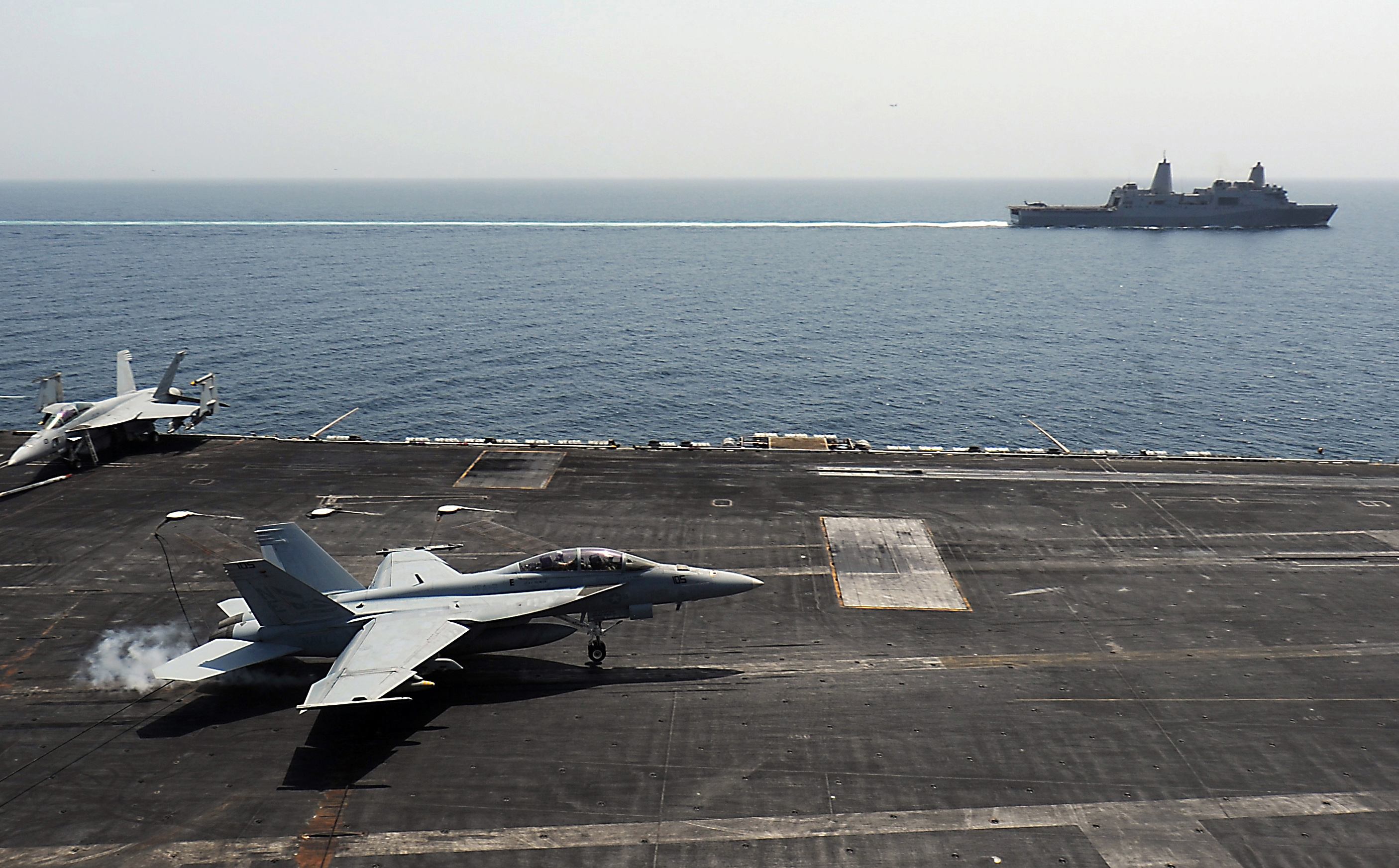
CAPITOL HILL – The commandant of the Marine Corps and the chief of naval operations have been discussing how to design a more effective naval campaign that leverages both the carrier strike group and the amphibious ready group to fight a near-peer competitor, Commandant Gen. Robert Neller told USNI News on Thursday.
Speaking at an Amphibious Warship Industrial Base Coalition’s congressional forum, Neller said he had followed up on his January fragmentary order – an add-on to the existing Commandant’s Planning Guidance – by working with CNO Adm. John Richardson to develop a naval operational concept.
“Your Marine Corps is first and foremost a naval combined-arms expeditionary force, and we are strongest as a fully integrated Navy-Marine Corps team, so we are going to man, train and equip and educate the force for that role,” he said.
“This requires more than just amphibious lift – the term amphibious lift denotes transportation. Marines ands sailors need to operate from the sea in the 21st century.”
Neller told USNI News after the event that he and Richardson are looking to revive the Navy-Marine Corps relationship that made the team so successful in the Pacific during World War II, and adapt that operational concept to apply to today’s potential adversaries.
“What Adm. Richardson and I are talking about is how, in the context of a naval campaign against a near-peer competitor, how would we project naval power – whether it’s setting conditions, whether it’s the strike mission, whether it’s putting a landing force ashore. How do we do that as a naval force?” he said.
“As opposed to, in the past, carriers did their thing over here and the amphibs did their thing over here. We need the Navy – if there’s a requirement to put a force ashore, they are the ones that are going to help make the conditions for us to do that and make us successful, just as we’ve done in our history.”
Rather than the Amphibious Ready Group/Marine Expeditionary Unit (ARG/MEU) acting as an independent unit responding to a crisis on its own, Neller said he and Richardson would rather see the carrier strike group or independent-deployers participate in long-range strike from the sea, electronic warfare and other condition-setting activities to support the Marines preparing to go ashore.
Similarly, Neller said he wants to see amphibious forces participate in missions outside of traditional amphibious operations. The introduction of the F-35B Joint Strike Fighter next year will bring a fifth-generation capability to the Marines several years before the F-35C carrier variant hits the Navy. He said that previously, in a crisis, people would look to the aircraft carrier to respond. Now operational commanders are more and more looking to the Marines’ long-range MV-22 Osprey tiltrotor aircraft, and “now, with all due respect to the carrier strike group … the next question’s going to be, where are the F-35s, the B. Where are those Marine jets?”
Director of Expeditionary Warfare (OPNAV N95) Maj. Gen. Chris Owens told USNI News in December that he too through the fleet introduction of the F-35B would force closer Navy-Marine Corps collaboration.
“As you look at having fifth-generation fighters aboard amphibious big decks before we have them aboard CVNs, how do we pair up the amphibious big decks with the carrier strike groups to provide that fifth-generation capability to the larger fleet and integrate with the fourth-generation capability that is resident on the CVNs?”
Neller said amphibious exercises this year – Bold Alligator on the East Coast, Dawn Blitz on the West Coast, Rim of the Pacific in Hawaii and Ssang Yong in South Korea – would begin experimenting with how to better coordinate between carrier strike groups and amphibious ready groups.





